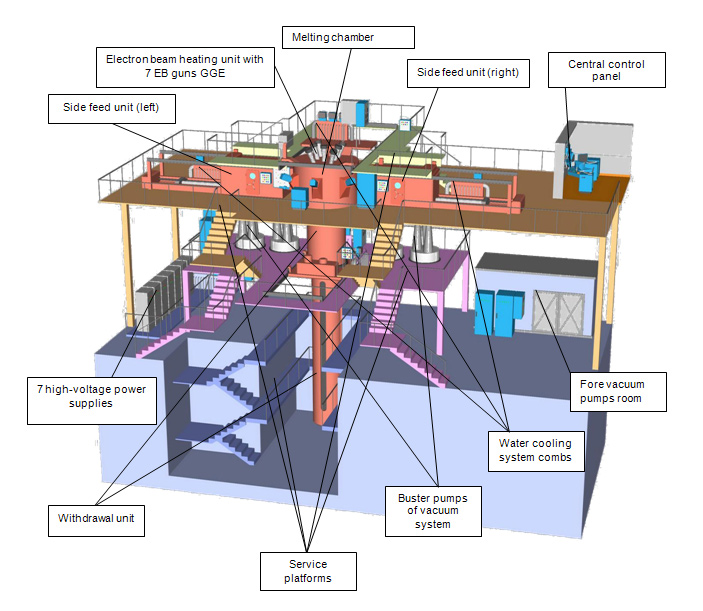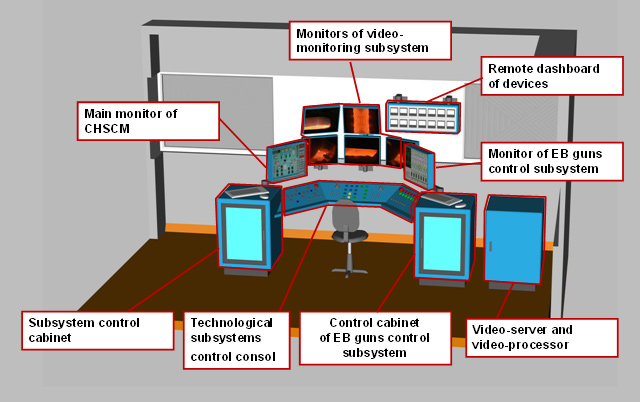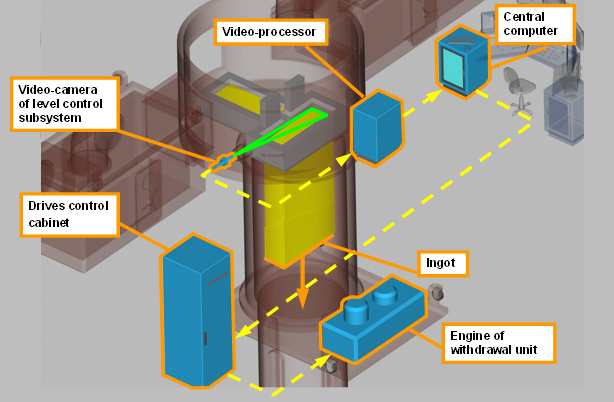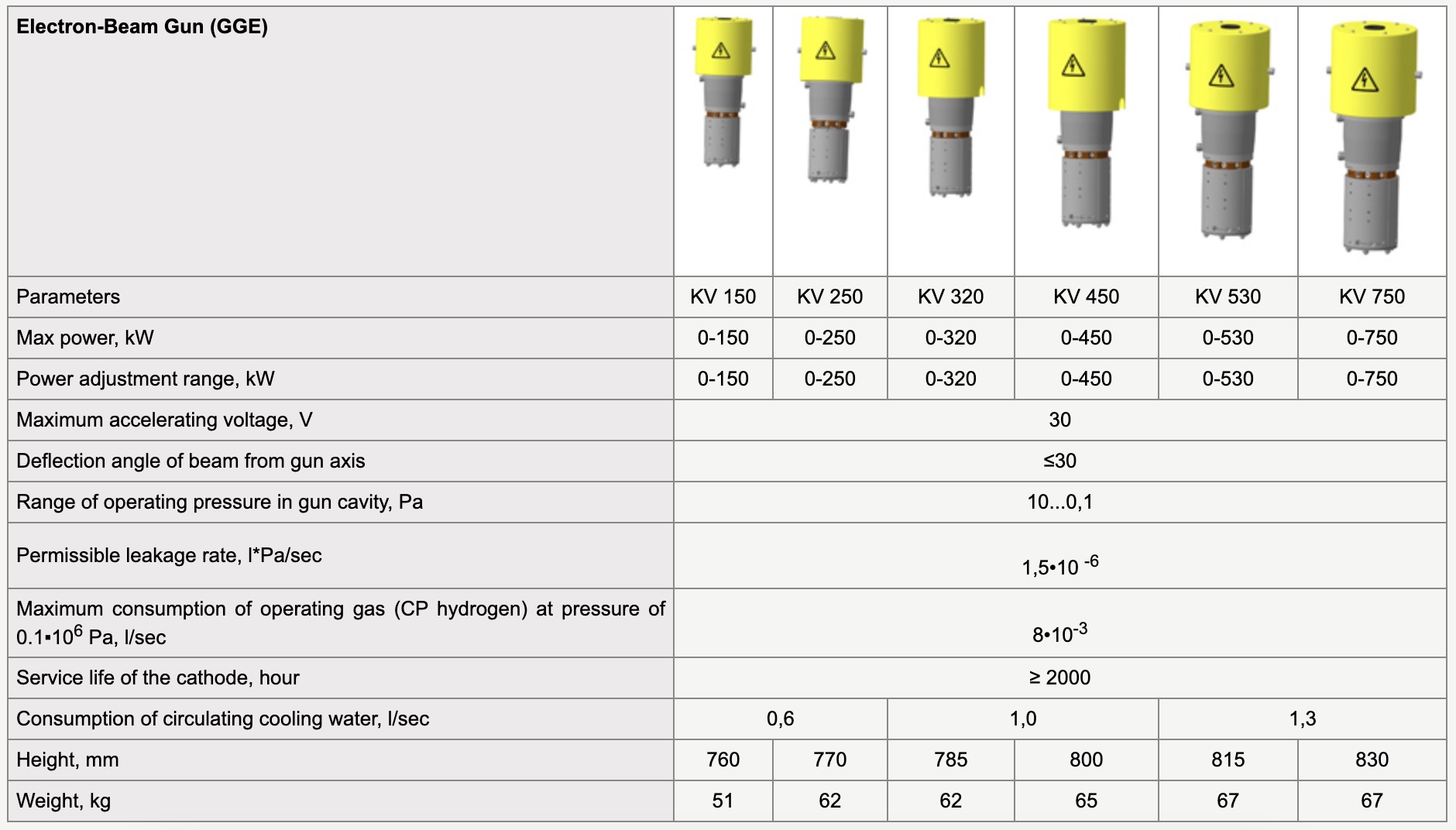We offer the supply of universal multi-purpose furnaces designed for the production of titanium ingots and slabs weighing up to 20 tons.
The contract for the supply of an electron beam furnace includes:
- full technical documentation
- equipment manufacturing
- delivery of equipment to the place of operation
- installation of equipment
- commissioning works
- commissioning
- technical Supervision
- warranty and post-warranty service
- training
- supply of spare parts and consumables
Electron-beam melting furnaces with an intermediate vessel of the KV series for the production of titanium and titanium alloys:
Capacity: ≤ 5000 tons/year
Ingot/slab length: ≤ 8000mm
Ingot diameter: ≤ 1000mm
Slab cross section dimensions: ≤ 500×1410mm
Weight: ≤ 15000kg
For the operation of the ELPE furnace of the KV series, it is required to connect to only 2 industrial sources: electricity and water.
Total electricity consumption per 1 ton of ingot: 1300 – 1800 kWh
The total volume of irretrievable water losses (including waste and domestic water) per 1 ton of ingot: ≤ 0.5 - 0.7m3

The basic delivery set of Electron beam furnace includes:

Scheme of melting on Electron beam furnace:

The mixture (4) loaded into non-fusible containers (3) is fed from both sides into the melting zone, which is carried out in the melting chamber in vacuum by means of electron beams of gas discharge guns (6). Beam scanning control allows you to control the technological modes of melting the charge at the ends of the blanks, in the intermediate tank (2), on the drain nose and in the mold (1) and eliminates burn-through of technological equipment. To prevent splashes of molten metal from entering the mold, a screen (5) is installed. The signal from the CCTV cameras (7) is transmitted to the monitors of the main control panel in real time, and is also automatically processed by the PCU systems. The signal from the metal bath level control camera in the mold (8) makes it possible to automatically control the ingot pulling device (9).
Features of the design of Electron beam furnaces of the KV series:
- the combination of the scheme of counter horizontal charge side feeders with the original design of the technological module and the compact melting chamber makes it possible to reduce the losses due to spattering and evaporation of the metal and achieve the required degree of melt refining with a noticeable reduction in power consumption;
- melting equipment (intermediate vessel with a drain nose and a mold) is combined into a single technological module, which is easily installed in the melting chamber and removed from it;
- KV gas-discharge electron guns do not require the use of individual high-vacuum pumps, while they operate reliably in the pressure range of 10 - 0.01 Pa and are not sensitive to pressure changes in the melting chamber during the melting process;
- VIP high-voltage power sources are compact and can be installed next to the electron-beam heating unit and KV guns.
The technological process and the operation of all furnace systems are controlled by a software and hardware control complex (PTKU) of the FOTON series, built on the principle of SCADA systems (Supervisory Control And Data Acquisition - remote control and data acquisition) based on remotely programmable logic controllers located in close proximity to the units and mechanisms of the furnace.
The operation of the furnace equipment is controlled both centrally in remote mode from the main control panel, and locally from local panels located directly near the control objects.

An important feature of the ELPE control complex for furnaces of the KV series is a video surveillance system consisting of 5 video cameras mounted in the melting chamber. This system is designed for visual and parametric control of the entire technological process from the melting of the charge at the ends of the consumable workpiece to the state of the melt in the mold bath, including metal level control.

Video surveillance data is broadcast on 5 monitors of the main control panel in real time, which allows the smelter to quickly control the smelting process.

In the subsystem for controlling the cast billet pulling device, a new scheme for automatic monitoring of the metal level in the mold bath is implemented, when the signal from the bath level video control camera is fed through the video processor to the central computer, which sets the required operating mode for the ingot pulling mechanism by means of the device control unit.

Electron beam guns
The main characteristics of gas discharge guns are rearranged in the table:

In gas-discharge electron guns, electron emission occurs due to the bombardment of the cathode by plasma ions, which occurs in a high-voltage glow discharge between the cathode and anode. The initial formation of the electron beam is provided by the design characteristics of the cathode and anode assembly. Further, with the help of focusing and deflecting lenses, the beam is focused on the heated surface and moves along it with a given frequency and trajectory (sweep).
The main distinguishing features of gas-discharge electron guns are:
- no need for additional vacuum pumping in the gun cavity by individual high-vacuum pumps, gas-discharge electron guns operate stably in the range of 10...0.1 Pa;
- low sensitivity to changes in pressure in the process chamber, exposure to vapors and even splashes of metal during the melting process, which allows stable melting of a gas-saturated charge of active metals, such as sponge titanium;
- compact dimensions, light weight, simplicity and reliability in operation;
- significant service life of the cathode;
- attractive price due to the use of non-deficient and inexpensive materials in the manufacture and maintenance.